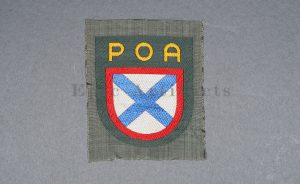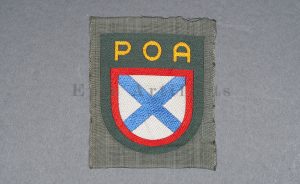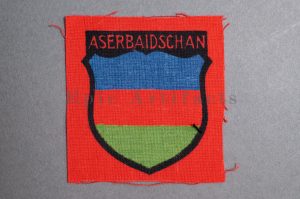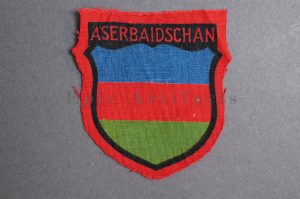Condition: Exc /NM
Maker: Huber Jordan u. Koerner
Sold
Product Description: A single unapplied Army helmet decal by Huber Jordan u Koerner. Commonly referred to as the thin winged decal. This decal has seen widespread use and can be found on many different helmet configurations. Both EF and NS factories used this decal on their M35 , M40 and M42 helmets. The single unapplied Army helmet decal is complete and is in excellent condition with no wear or tears. On the reverse is marked S.37531 Huber Jordan u. Koerner – Nürnberg. The Army helmet decal is difficult to find unapplied and would make a nice display for any headgear collector!
Historical Description: When the German Army first marched into war in 1914 it went to the front lines wearing the traditional “Picklehaube” helmets. The war soon developed to necessitate the need for an improved headgear to protect the wearer. The German Army developed the M16 helmet in 1915 and began issuing it in mass quantity to its fighting troops in 1916. The M16 underwent changes to bring about the next model, the M18. Both the M16 and M18 saw use by the German Army during WW1, as well as the interwar years by the Reichswehr and Freikorps. In 1931, a new liner system was developed. The M16 and M18 helmets were in mass supply right up to the time the Nazi Party took control of the German government. During Adolf Hitler’s rearming of the German military in the early 1930’s, the M16 and M18 helmets saw extensive refitting with the newer liner system, fresh paint, and the addition of a centralized decal system for the newly formed Wehrmacht’s respective branches. Decals were generally placed on each side of the helmet, one side being the branch and the other the national colors shield or party shield. In 1935, the M35 helmet was introduced. This new design was lighter and more streamlined than the older style helmets and is what the world now recognizes as the iconic helmet of the German Military. M35 helmets can most easily be identified from the separate rivet ventholes and rolled eadges. With the outbreak of war, some changes were made to bring in a new model, the M40. The changes made to this new model was the use of a more matte field grey finish and the vent holes were now integral to the helmets shell. In 1940, the national colors decals and party shields were ordered to be removed. It should be noted that many M35 helmets were brought up to date by repainting them with the matte field grey finish and/or other modifications if necessary. These refitted helmets are what collectors now term “reissue helmets”. The next model helmet to evolve was the M42. The model M42 has the same features of the M40 with the exception of the edges of the helmet not being rolled and remain flared. This was to speed up production and lower cost as the war dragged on and the German economy began changing to a total war economy. In 1943 all decals were ordered to be removed from combat helmets.
We are the leading team of military antique specialists. We have specialized in military antiques for over 25 years.
Epic Artifacts offers free evaluations and the highest prices available for your collectibles.
We purchase single items, entire collections, or family estates.
Click the link here to learn more: Free Evaluation or Inquiries
or feel free to email us directly: info@epicartifacts.com

In stock

In stock

In stock

In stock